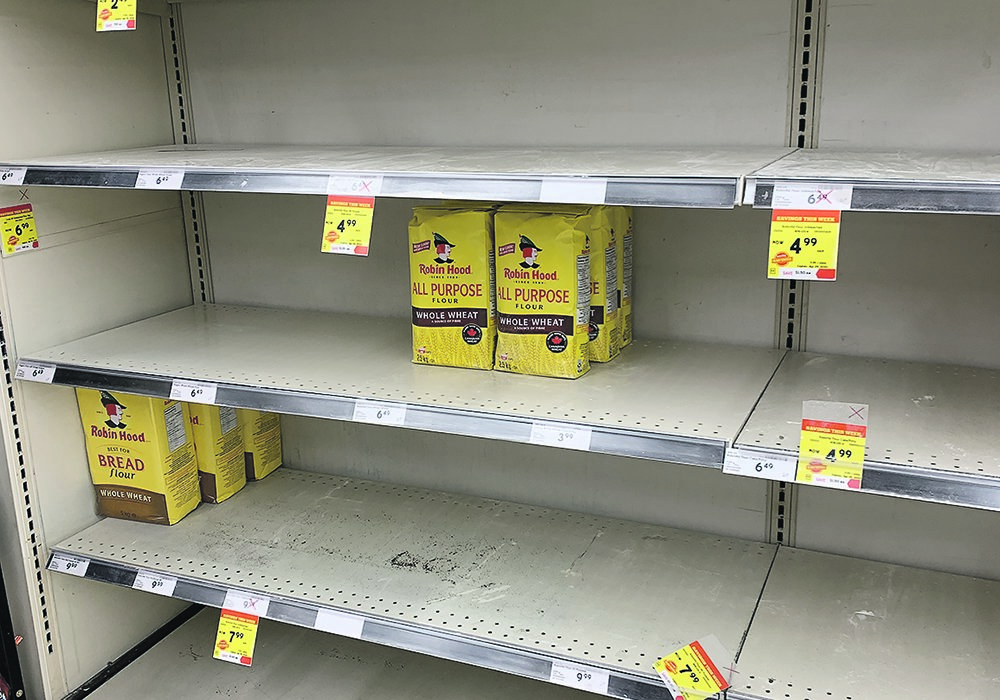Food doesn’t come from the grocery store. That is one of the lessons North Americans are learning during this pandemic. Another is learning to spread risk.
Like other major industries that have been bent on a path to lower costs over time, food has been sourced globally from the cheapest suppliers it can find. Is that all bad? It might be a stabilizing force in the world.
From a farmer’s perspective, it seems as though it’s farm-fate that any new costs in the system are ultimately borne by producers. Those costs may come from global competition or from new operational costs such as additional retailer sanitation or changes in consumer habits.
Read Also

Proactive approach best bet with looming catastrophes
The Pan-Canadian Action Plan on African swine fever has been developed to avoid the worst case scenario — a total loss ofmarket access.
But neither consumers nor middlemen ever bear the burden of extra costs for long.
There are signs that the pandemic has changed that, but whether it’s a lasting trend is a matter of speculation.
As more people are becoming familiar and comfortable with direct purchase at the farmgate and through e-commerce, the commodity and food chains as we’ve known them could change drastically. Potentially this will allow some farmers to benefit more fully from their food production efforts, spreading their risk on the demand side.
Recent surveys conducted at Dalhousie University show many consumers bought food products online for the first time ever within the last two months. More than 20 percent say they will continue doing so when a semblance of normalcy returns and that percentage is likely to rise.
However, most Canadian farmers work on the commodity side, not at the farm gate.
Our planet is fed through a global platform that starts with a low-cost producer like Canada. Grains and oilseeds move through middle players such as Cargill, ADM, Louis Dreyfus, Bunge, Glencore and Richardson, which provide food products to giants including Nestle, Kraft and Unilever.
The giant middlemen companies survive on high volumes of thin margins, just as most farmers do, and maintain the ability to competitively swap raw products from around the globe depending on supply and price.
Falling crop supplies from poor harvests in some parts of the world from 2007 to 2012 resulted in spiking commodity prices and then higher consumer food prices, culminating in the Arab Spring. The result was the destruction of Syria, the rise of ISIS and civil wars in Libya, Egypt, Bahrain and Yemen, plus food price protests from Mexico to Mauritania.
While prices jumped, only soybean production failed to keep up with demand. Carryout stocks were more than sufficient to maintain supplies, so no global shortages occurred. Their risk wasn’t spread wide enough.
Like flour in the grocery store this spring, globally there was enough supply. It was a supply chain problem that had consumers fighting over 10-pound bags and eventually going to local millers for supplies.
Attendees at a recent meeting of the World Trade Organization, which represents about 65 percent of all agricultural exports, pledged to maintain open global trade. If India and China continue to open their markets and America stops putting itself first, and all accept more globalization, we might see improved commodity price stability.
The problem with everyone spreading their risks is that western Canadian farmers, like the global food ingredients middle-folk, will have to survive on tight margins and high volumes. Unlike middle-folks, though, farmers can’t always rely on having the high volumes part of the equation.
Karen Briere, Bruce Dyck, Barb Glen and Mike Raine collaborate in the writing of Western Producer editorials.

















